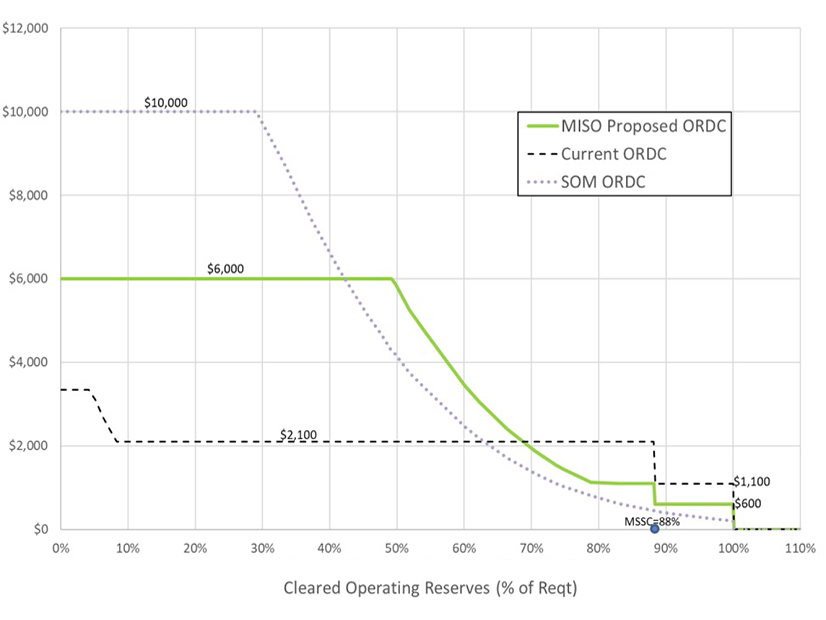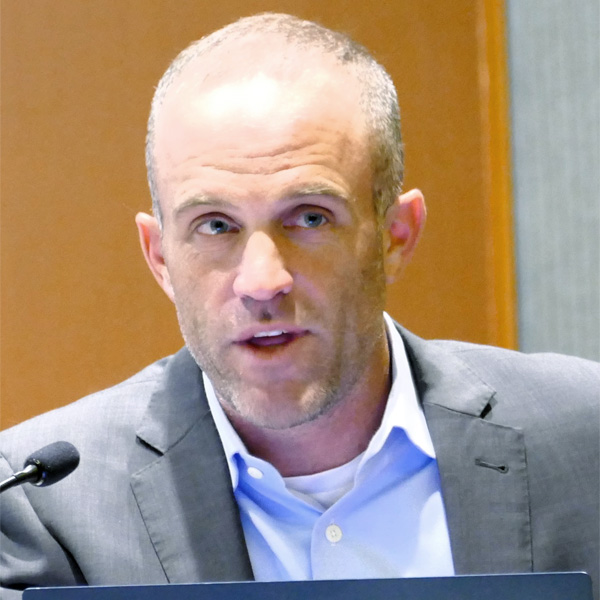WASHINGTON, D.C. ― Sen. Sheldon Whitehouse (D-R.I.) is bullish on CBAM, the European Union and United Kingdom’s adoption of a carbon border adjustment mechanism, which he believes could finally push the U.S. Congress to put a price on carbon.
The CBAM (pronounced “see-bam”) will levy a price on the carbon dioxide emitted in the production of goods imported into the EU and U.K., in essence a tariff, if the carbon has not been accounted for in the country of origin. Adopted in 2023, the EU CBAM is scheduled to go into effect in 2026. The U.K. pledged to adopt its own version by 2027 at the recent UN Climate Change Conference in the United Arab Emirates.
“That means the American products being exported into the EU or the U.K. will pay a tariff for the relevant carbon inefficiency of their manufacturing,” Whitehouse said in a keynote speech at the American Council on Renewable Energy’s Policy Forum on Feb. 29. “Which gives a very, very strong motivation to those industries to come to Congress and say, ‘Hey, lift this tariff. … I don’t want to have this collar around my neck when I’m trying to compete in the EU and the U.K.’ And the only way to get that collar lifted is with a domestic carbon price.
“So, there’s finally, finally, finally going to be some industry counterpressure against the fossil fuel industry in Congress, and that could be the tipping point that will help us move toward carbon pricing.”
One of the Senate’s strong liberal voices on climate change, Whitehouse repeatedly slammed the fossil fuel industry for its campaign of “climate denial and propaganda … run through multiple dozens of phony friends groups.”
“The more [we} can find a way to call that out, the easier it is for the public to understand that, no, actually the wind turbines off Rhode Island are not killing the right whales, and that information comes from a source they should not trust.”
Having clear information “can help change public opinion in these localized debates,” he said, referring to the rise in local opposition to renewable energy projects.
But Whitehouse also criticized President Joe Biden for not making better use of his “bulliest of pulpits” to counter industry misinformation, for example, pointing to the Securities and Exchange Commission’s proposed rule on corporate disclosure of climate-related risk.
As reported by Reuters, pushback from corporate interests and state officials may have resulted in the SEC dropping a key provision of the proposed rule, requiring U.S. corporations to report the greenhouse gas emissions from their supply chains, called Scope 3 emissions.
“Some significant financial companies have retrenched … on their [environmental, social and governance efforts], Whitehouse said. “Their complaint about ESG … is never the S; it’s never the G. It’s always the E, and the E it always is is fossil fuel.”
The fossil fuel “roadshow” against the disclosure rule and the lack of more outspoken support from the White House has caused agencies such as the SEC “to pull their ambitions in a little bit,” he said.
The commission is set to vote on the rule at its March 6 meeting. Responding to a query from NetZero Insider, an SEC spokesperson declined to comment on the Reuters report, framing it as “speculation about what may be in or out of a rulemaking.”
The IRA Tipping Point
The upcoming election and defending the Inflation Reduction Act against former President Donald Trump’s potential return to the White House have become increasing concerns at industry events like the ACORE forum.
In an on-stage conversation with Lesley Hunter, ACORE’s senior vice president for policy, finance and ESG, Whitehouse likened Republican calls to repeal the IRA to their previous attempts to repeal the Affordable Care Act passed in 2010, the massive health care law widely referred to as “Obamacare.”
Republicans made several attempts to repeal the law while Trump was in power, Whitehouse recalled, “until a certain tipping point of constituents were enjoying the benefits of Obamacare … and you kind of had to live with it.” Now, with projects funded by the IRA spreading across blue and red congressional districts, “it would be hard for a member to go back and vote against the IRA after they attended the ribbon cutting for a significant project.”
The best defense for the IRA is to go on announcing and building projects, he said. “Have ceremonies and invite public officials and let them know it came through the IRA.”
At the same time, Whitehouse gave the IRA and Biden’s executive actions on climate change mixed reviews. The law has been a “terrific success,” he said, but details of implementation, and the law’s durability, may depend on moving rules through a federal bureaucracy where speed still can be slowed by one recalcitrant official or agency.
The Biden administration’s rule requiring federal agencies to include the social cost of carbon in project cost estimates is another step toward carbon pricing, as is the IRA’s fee on excess methane emissions, Whitehouse said. Their impact, however, may depend on how rigorously individual agencies implement both measures.
Looking at the social cost of carbon, “you need to be making sure agency by agency that they are following [administration] guidance and actually setting up the decision making in their power purchase contracts and agreements,” he said.
EPA issued a proposed rule in January on methane charges ― to be imposed on oil and gas facilities emitting more than 25,000 metric tons of carbon dioxide per year ― with a comment period ending March 26.
The proposed rule does contain provisions that would allow exemptions for some oil and gas companies. Echoing concerns of environmental and clean energy advocates, Whitehouse urged EPA to avoid any loopholes, “responding like firefighters to smoke coming out of a building, and getting the damn thing shut down, and not with fire hoses but with lawyers.”
Permitting Update
Whitehouse also gave an update on bills he has introduced aimed at streamlining the siting and permitting of interstate transmission and offshore wind.
“Continued progress” is being made, he said, to reconcile the Streamlining Interstate Transmission of Electricity (SITE) Act, which he introduced in March 2023, and Sen. Martin Heinrich’s (D-N.M.) Facilitating America’s Siting of Transmission and Electric Reliability (FASTER) Act, introduced in June.
Both bills would give FERC expanded authority for permitting interstate transmission lines. While chances for a general permitting bill are low, Whitehouse remains hopeful that “if circumstances are right, [a transmission permitting bill] could move fairly quickly; so, we want to be ready for that.”
His offshore wind bill ― the tortuously named Create Offshore Leadership and Livelihood Alignment By Operating Responsibly And Together for the Environment (COLLABORATE) Act ― was released in draft form in January for comment. The bill aims to streamline permitting by frontloading “disputation,” Whitehouse said.
The goal is to “bring in the real people who are going to be affected by [an offshore project], so you can get off to a much faster start and not find your opponents lurking in the weeds through the long administrative process,” he said.
“We’re pretty close to landing the final text, but we’re wide open to further amendments,” Whitehouse said. “Then the question is what’s the vehicle?” The best chance could be attaching COLLABORATE to either a must-pass bill or some kind of bipartisan consensus package, he said.

